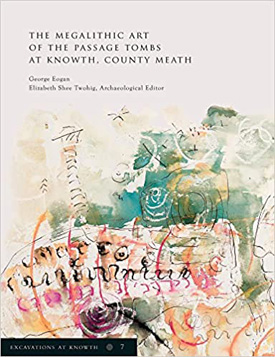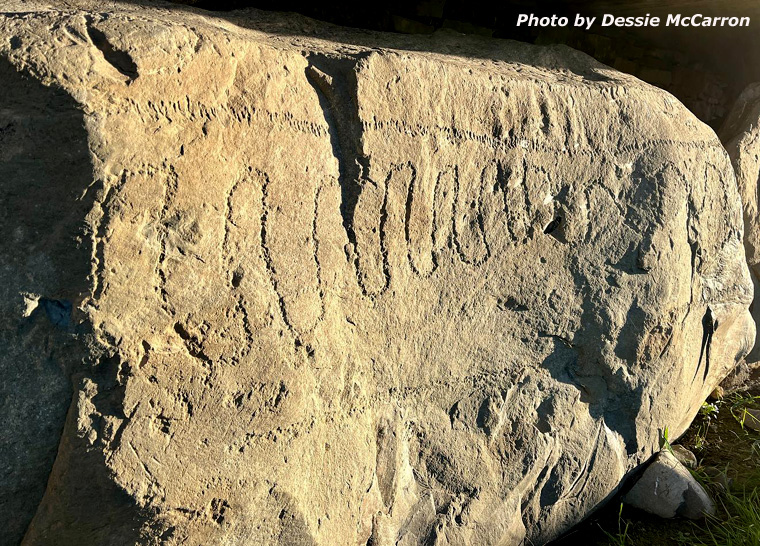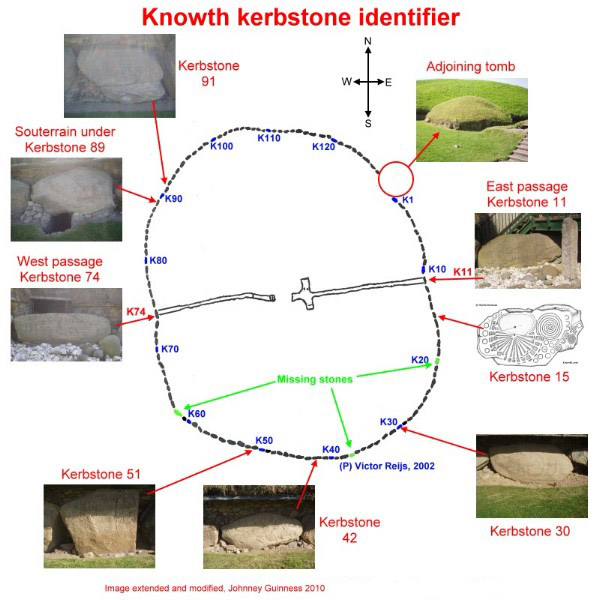The Megalithic Art of the Passage Tombs at Knowth, Co. Meath
 Description of Kerbstone 81
Description of Kerbstone 81A long serpentiform motif enclosed in a gapped, rectangular frame is picked across the upper part of the stone. The bends in the centre of the serpentiform are set close together, but at each end the bends become more splayed out. More than one phase of carving may be a factor here, as the picking of the serpentiform also shows differences, with the pickmarks set closely together in the centre but much more widely spaced at each end, particularly on the right.
Different techniques were also used for the rectangle; a chisel with a narrow cutting edge and a medium-sized point were used for the bottom line, while a chisel with a medium cutting edge was used for the top line. On the left this was made with a series of short, vertical marks. A short, horizontal line is picked along the right shoulder of the stone. Part of the lower-left corner of the rectangle is flaked off, and there are a number of dispersed chisel marks in that area.
Purchase at Amazon.com or Amazon.co.uk. View or Download at Digital Repository of Ireland.
Knowth is a Stone Age Passage Tomb in the Boyne Valley in Ireland's Ancient East and together with Newgrange and Dowth are the principal sites of Brú na Bóinne UNESCO World Heritage Site. Knowth is the largest passage tomb of the Brú na Bóinne complex. The main mound is about 12 metres (40 ft) high and 67 metres (220 ft) in diameter covering about 1 hectare (2.5 acres). It contains two passages placed along an east-west line and was originally encircled by 127 kerbstones of which 124 are still in place.
Boyne Valley Private Day Tour
 Immerse yourself in the rich heritage and culture of the Boyne Valley with our full-day private tours.
Visit Newgrange World Heritage site, explore the Hill of Slane, where Saint Patrick famously lit the Paschal fire.
Discover the Hill of Tara, the ancient seat of power for the High Kings of Ireland.
Book Now
Immerse yourself in the rich heritage and culture of the Boyne Valley with our full-day private tours.
Visit Newgrange World Heritage site, explore the Hill of Slane, where Saint Patrick famously lit the Paschal fire.
Discover the Hill of Tara, the ancient seat of power for the High Kings of Ireland.
Book Now
Home
| Newgrange
| Knowth
| Dowth
| Hill of Tara
| Fourknocks
| Loughcrew
| More Places
| Labyrinths
| Local Info
| Art Works
| Articles
| Images
| Books
| Links
| Boyne Valley Tours
| Contact


